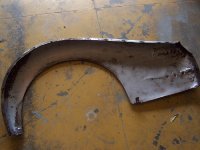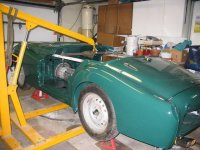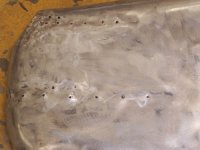-
The Roadster Factory Recovery Fund - Friends, as you may have heard, The Roadster Factory, a respected British Car Parts business in PA, suffered a total loss in a fire on Christmas Day. Read about it, discuss or ask questions >> HERE. The Triumph Register of America is sponsoring a fund raiser to help TRF get back on their feet. If you can help, vist >> their GoFundMe page.
-
 Hey there Guest!
Hey there Guest!
If you enjoy BCF and find our forum a useful resource, if you appreciate not having ads pop up all over the place and you want to ensure we can stay online - Please consider supporting with an "optional" low-cost annual subscription.**Upgrade Now**
(PS: Subscribers don't see this UGLY banner)
TR2/3/3A TR3 rear fender
- Thread starter mcguijo
- Start date
Share this page
Similar threads
Similar threads
-
-
-
-
-
-
-
-
-
-
-
-
-
-
For Sale Triumph TR3 rear differential and rear brake assembly - Northern Illinois
- Started by johnsteichen
- Replies: 1
-
-
-
-
TR2/3/3A TR3 Engine dumping Coolant out its rear end - HELP
- Started by decibeldesign
- Replies: 5
-
-
-
-
-
-
-
-
TR2/3/3A TR3 Exhaust header's proximity to rear of generator?
- Started by karls59tr
- Replies: 4
-
-
TR2/3/3A Anyone have any photos of TR3's sporting rear finned aluminum brake drums?
- Started by 1937dodge
- Replies: 8
-
-
-
-
-
-
-
M
-
TR2/3/3A Wanted: TR3 Rear Bumper Overrider - any condition.
- Started by RickAnderson
- Replies: 2
-
-
-
M
-
-
-
-
-
-
-
-
-
-
-


 smilie in place of the real @
smilie in place of the real @
 Pretty Please - add it to our Events forum(s) and add to the calendar! >>
Pretty Please - add it to our Events forum(s) and add to the calendar! >> 




 A friendly reminder - be careful what links you click on here. If a link is posted by someone you don't know, or the URL looks fishy, DON'T CLICK. Spammers sometimes post links that lead to sites that can infect your computer, so be mindful what you click.
A friendly reminder - be careful what links you click on here. If a link is posted by someone you don't know, or the URL looks fishy, DON'T CLICK. Spammers sometimes post links that lead to sites that can infect your computer, so be mindful what you click.